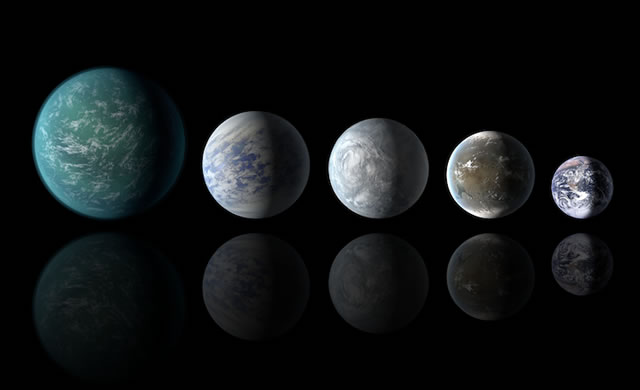
Dove dobbiamo cercare la vita extra-terrestre? Secondo un recente studio mondi tre volte più grandi del nostro potrebbero avere condizioni ben più propizie per ospitare la vita. E questa è solo l’ultima di una serie di proposte che spingono a cercare la vita extraterrestre al di fuori della zona abitabile.
Negli ultimi vent’anni abbiamo assistito a un gran proliferare di nuovi esopianeti. L’eventuale scoperta di una Seconda Terra che ospiti la vita e che viaggi inconsapevole in qualche remoto punto dell’Universo ha un fascino invincibile al quale cediamo senza opporre resistenza. Cerchiamo pianeti simili al nostro per dimensioni, temperature e atmosfera e li cerchiamo nella “zona abitabile”, la regione intorno a una stella dove un’altra Terra potrebbe avere acqua liquida sulla sua superficie. Ma se il nostro pianeta è effettivamente l’unico posto a noi noto dove la vita complessa sia riuscita a evolvere, questo non significa che la vita complessa sia necessariamente come noi la conosciamo, o che non possano esistere pianeti totalmente diversi dalla Terra dove la vita si sia sviluppata. Diversi recenti studi chiedono di ripensare al concetto di abitabilità, ultimo tra questi arriva quello a firma di René Heller, della McMaster University, e John Armstrong, della Weber State University, pubblicato recentemente su Astrobiology. Secondo i due ricercatori i pianeti alieni leggermente più grandi del nostro potrebbero essere addirittura più adatti a ospitare la vita di quanto non lo sia la Terra.
Fonte/Leggi tutto → Media.INAF.it
To be habitable, a world (planet or moon) does not need to be located in the stellar habitable zone (HZ), and worlds in the HZ are not necessarily habitable. Here, we illustrate how tidal heating can render terrestrial or icy worlds habitable beyond the stellar HZ. Scientists have developed a language that neglects the possible existence of worlds that offer more benign environments to life than Earth does. We call these objects “superhabitable” and discuss in which contexts this term could be used, that is to say, which worlds tend to be more habitable than Earth. In an appendix, we show why the principle of mediocracy cannot be used to logically explain why Earth should be a particularly habitable planet or why other inhabited worlds should be Earth-like.
Superhabitable worlds must be considered for future follow-up observations of signs of extraterrestrial life. Considering a range of physical effects, we conclude that they will tend to be slightly older and more massive than Earth and that their host stars will likely be K dwarfs. This makes Alpha Centauri B, which is a member of the closest stellar system to the Sun and is supposed to host an Earth-mass planet, an ideal target for searches for a superhabitable world. Key Words: Extrasolar terrestrial planets—Extraterrestrial life—Habitability—Planetary environments—Tides. Astrobiology 14, 50–66.
Source/Continue reading → online.liebertpub.com





















